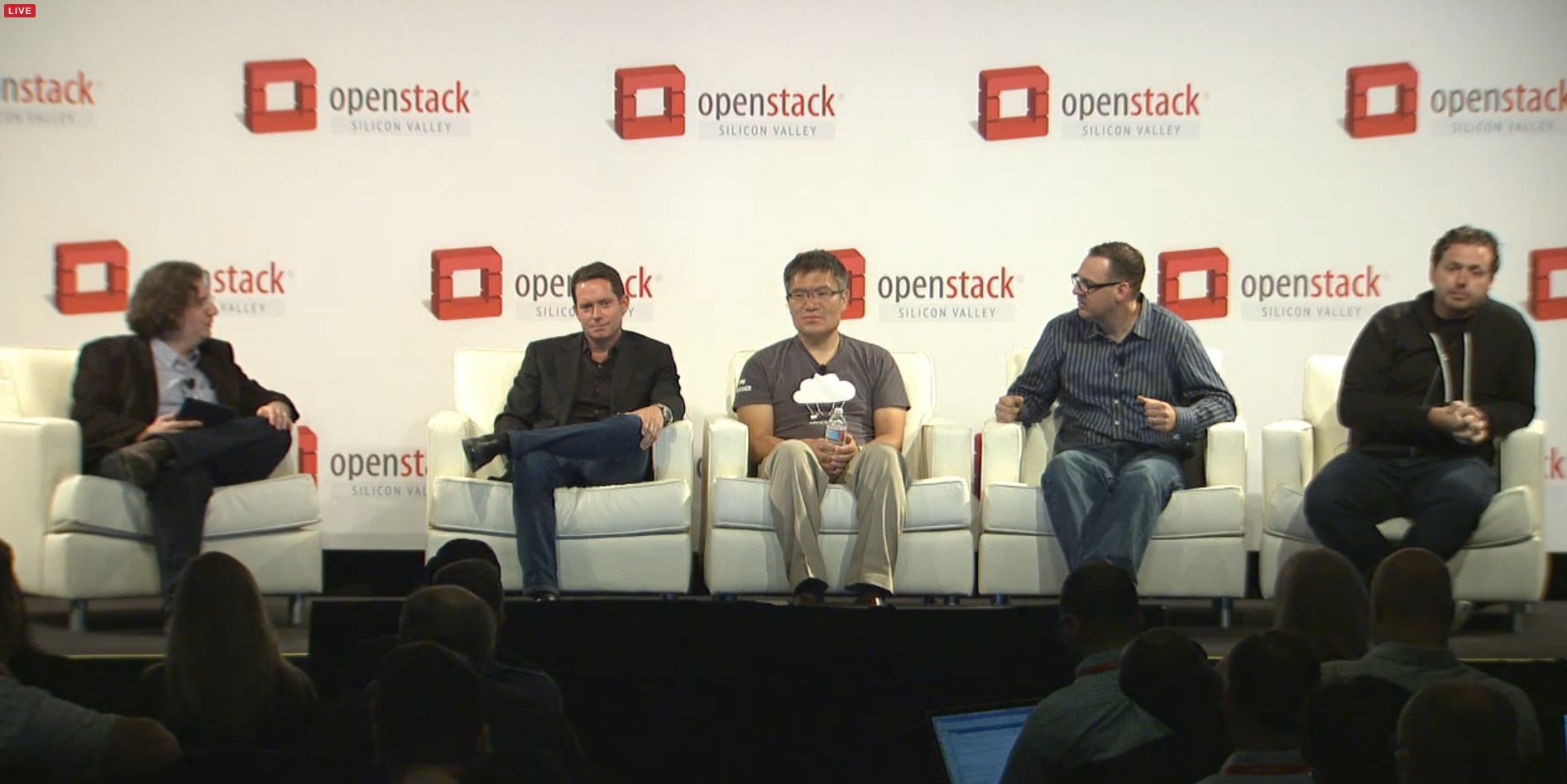 NEWS
NEWS
 NEWS
NEWS
 NEWS
NEWS
OpenStack Silicon Valley 2015 continues to engage in meaningful dialogue about Cloud computing and its place in our world today. The keynote panel for Day 2 of the conference sparked debate about the hype around containers and what that means for our future. The panel included
Derek Collison, CEO of Apcera, Inc.; Sheng Liang, CloudStack pioneer and Rancher Labs, Inc. founder; James Watters, VP & GM, Cloud Platforms of Pivotal Software, Inc.; and Adrian Otto, principal architect at Rackspace, Inc. and Magnum Project technical lead.
A raise of hands in the room during the keynote panel showed that hardly anyone attending the session is using containers right now, but they might be planning to use them in the near future. There’s a lot of hype in the container world, but vendors and customers have questions and concerns.
Collison began the conversation by saying that a lot of the questions people have about container security, networking orchestration, etc., will get resolved. Everything IT has been doing over the past 20 years is to make IT faster and better. IT continues on that cycle.
“Eventually, you go so fast that you’re changing the way you do things,” said Collison. So containers might be fundamentally changing how people are architecting things. Otto added that containers are definitely at the point of a breakthrough, and people are getting excited.
But are containers a true breakthrough? Panel members discussed this question. Watters said that the biggest changes are really more organizational and architectural. His example was Netflix, Inc., which changed its whole architecture with Virtual Machines (VMs). Netflix focused on culture and architecture, implementing with VMs in the right way. It seemed to Watters that big companies aren’t going to containers.
Collison added that “the container tech itself has been around a long, long time.” Right now, it’s the fact that containers are getting more lighter-weight and faster that is so exciting. Now, people can build faster and build less.
Liang agreed that containers are extremely revolutionary. “I get really excited when I see a lot of the early innovations that companies like Google and Netflix created around micro services,” Liang said.
Almost everyone on the panel agreed that VMs are not going anywhere anytime soon. As Otto pointed out, containers aren’t really trying to solve infrastructure problems. They have nothing to do with what VMs are good at. “VMs and containers will be working together in combination for a long time,” Otto said. The industry does need big, distributive systems. It needs an answer on how to do that well. “Containers offer a glimpse of hope to be able to do that.”
“I just use Google’s public Cloud as the bar,” added Watters. “If you could go 100% container, they woud’ve done it.”
After more discussion over implementation of VMs, containers and systems. Collison summed up the future this way: “In 2020, all I can promise is everything we think is happening could be wrong.” In 2020, all the rules that the industry thinks are going to exist might not be there. It’s always an unpredictable future.”
Watch the full interview below, and be sure to check out more of SiliconANGLE and theCUBE’s coverage of the OpenStack Silicon Valley 2015.
Support our mission to keep content open and free by engaging with theCUBE community. Join theCUBE’s Alumni Trust Network, where technology leaders connect, share intelligence and create opportunities.
Founded by tech visionaries John Furrier and Dave Vellante, SiliconANGLE Media has built a dynamic ecosystem of industry-leading digital media brands that reach 15+ million elite tech professionals. Our new proprietary theCUBE AI Video Cloud is breaking ground in audience interaction, leveraging theCUBEai.com neural network to help technology companies make data-driven decisions and stay at the forefront of industry conversations.